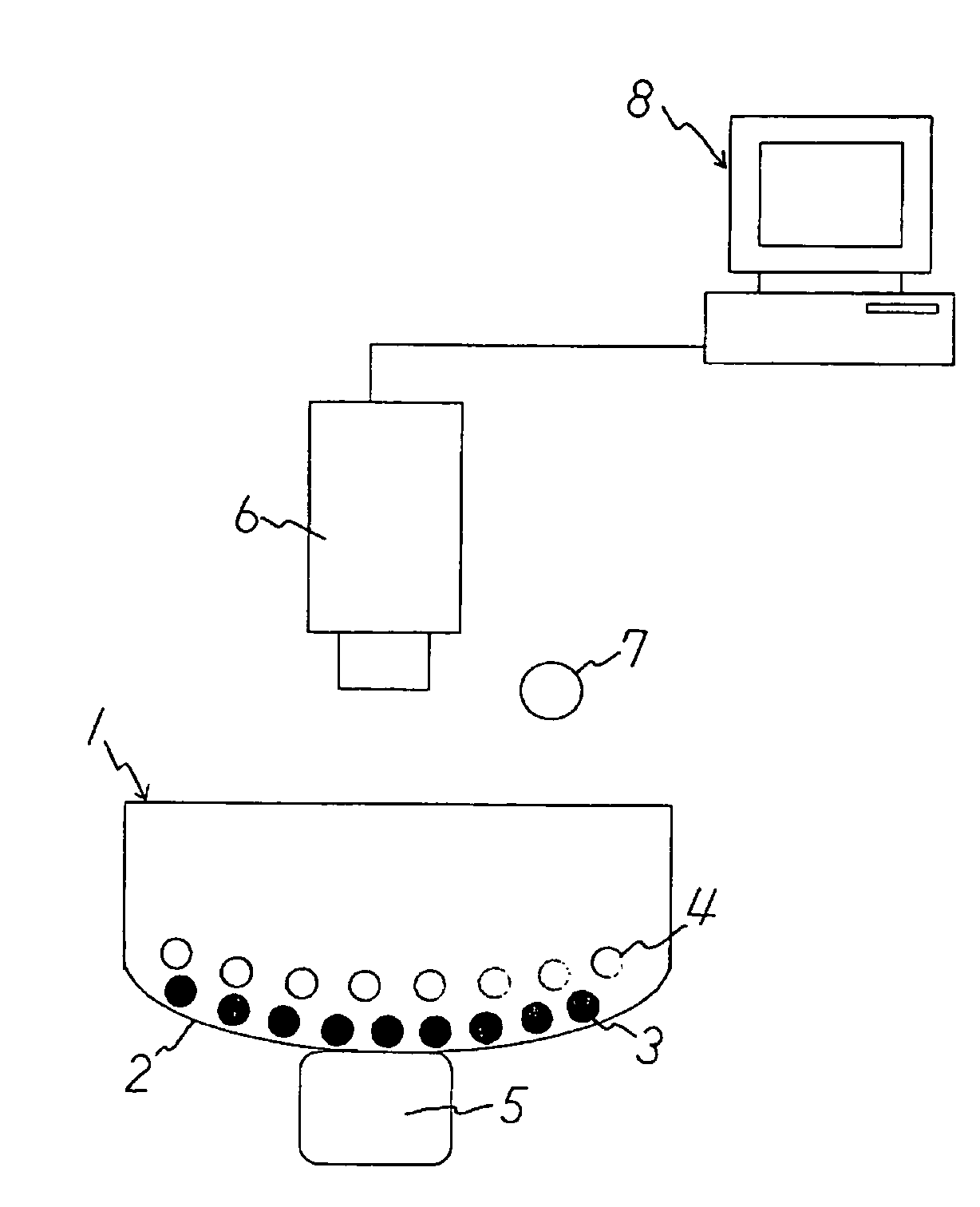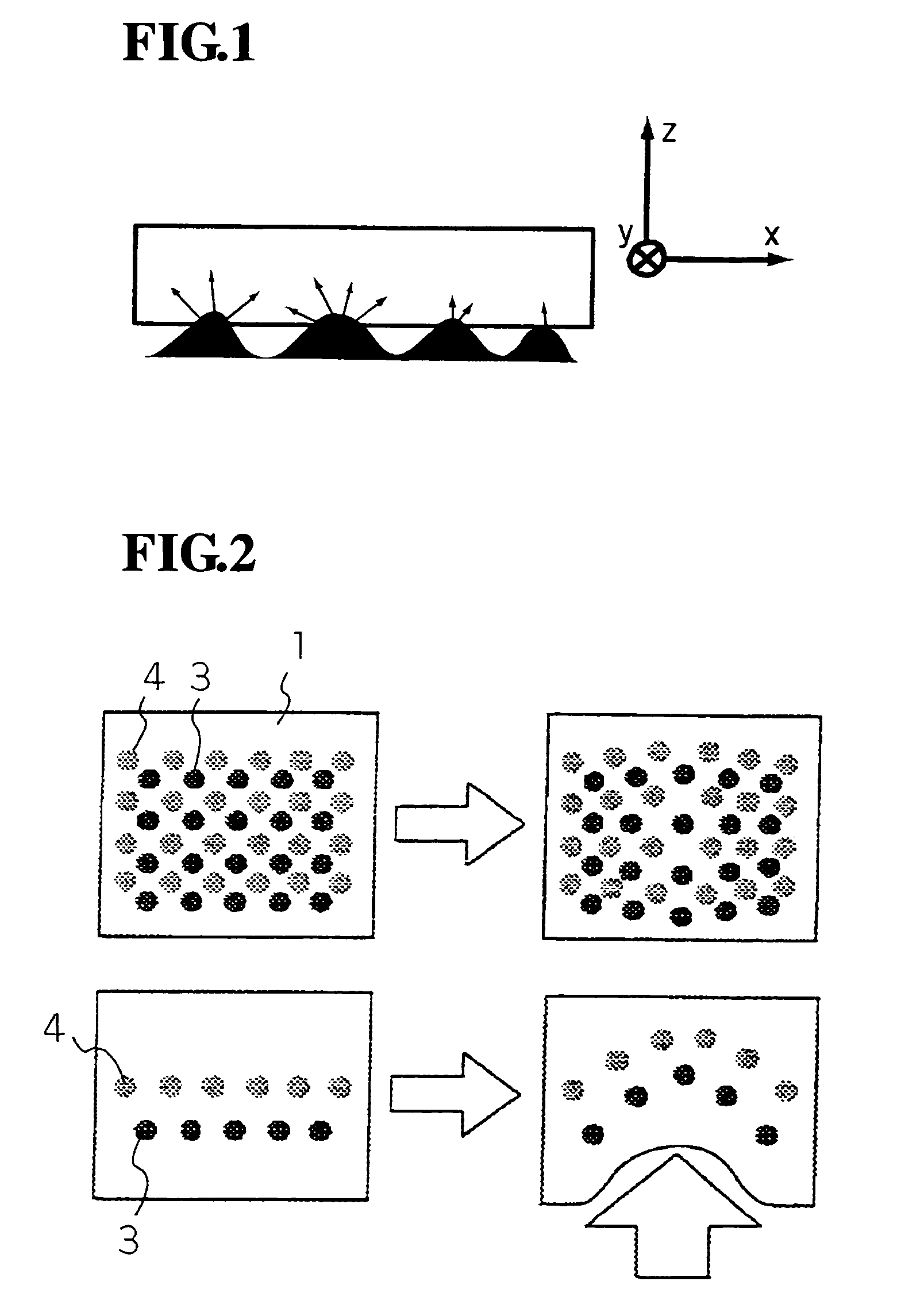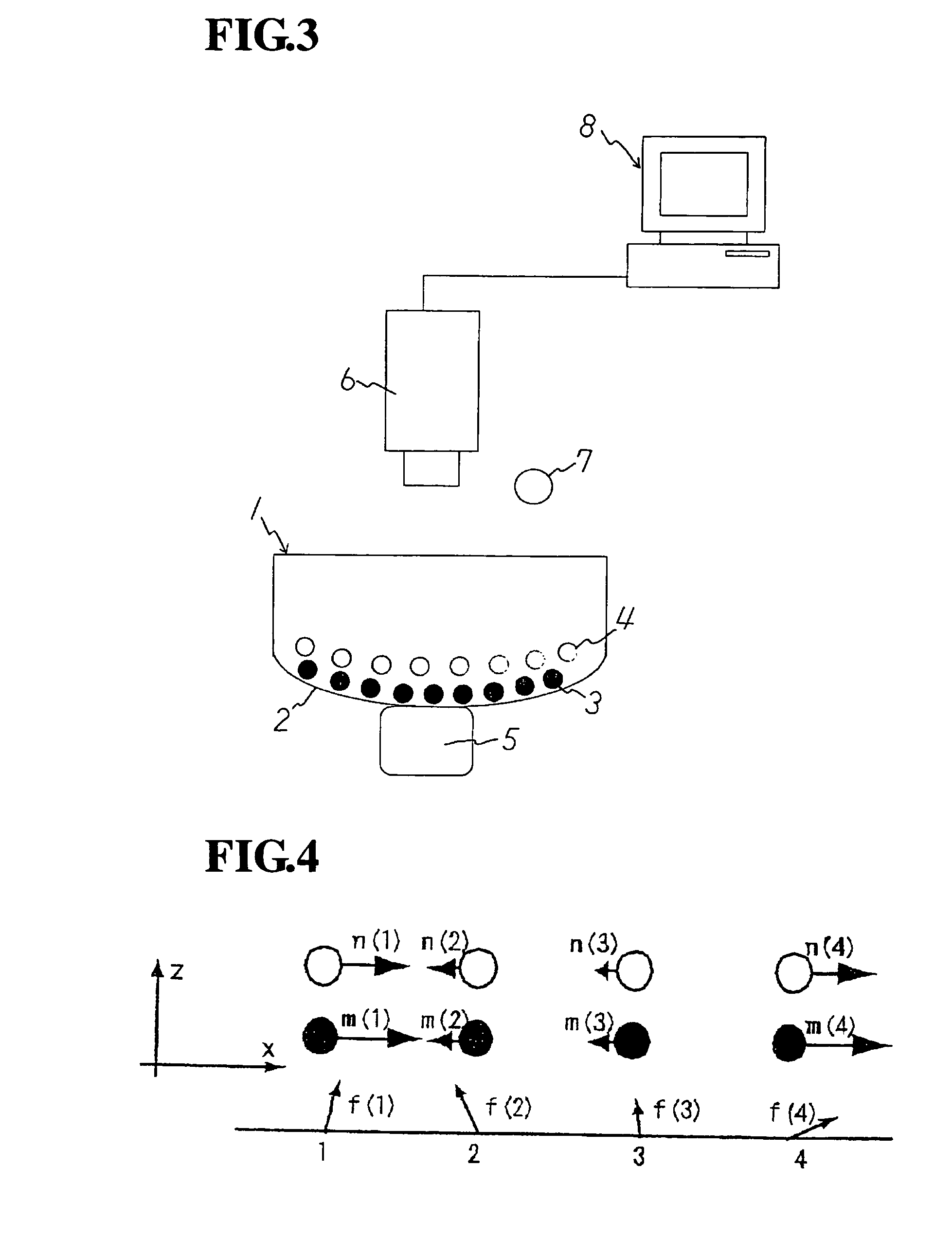Force vector reconstruction method using optical tactile sensor
a technology of optical tactile sensor and force vector, which is applied in the direction of force measurement by measuring optical property variation, force/torque/work measurement apparatus, instruments, etc., can solve the problems of low contribution level of the marker to the force application point, and achieve the effect of shortening the computation time of the force vector calculation
- Summary
- Abstract
- Description
- Claims
- Application Information
AI Technical Summary
Benefits of technology
Problems solved by technology
Method used
Image
Examples
Embodiment Construction
[A] Construction of Optical Tactile Sensor
[0033]Referring to FIG. 3, the construction of an optical tactile sensor of the present invention is shown. The sensor comprises a transparent elastic body 1 formed of a transparent elastic material and a curved surface 2, or a surface for sensing. The transparent elastic body 1 is provided with a plurality of colored markers 3, 4 embedded in the transparent elastic body 1 in the vicinity of the surface 2 and along the curved surface 2. A tactile section is comprised of the transparent elastic body 1 and the colored markers 3, 4 arranged inside the elastic body. The transparent elastic body 1 is preferably made of silicone rubber, but it can also be made from another elastic material such as the other types of rubber or elastomer.
[0034]The colored markers 3, 4 are comprised of two groups of colored markers and the two marker groups are embedded in different depths respectively from the surface 2. Colored markers 3 constituting one marker gro...
PUM
| Property | Measurement | Unit |
|---|---|---|
| force | aaaaa | aaaaa |
| force vector reconstruction | aaaaa | aaaaa |
| transparent | aaaaa | aaaaa |
Abstract
Description
Claims
Application Information
 Login to View More
Login to View More - R&D
- Intellectual Property
- Life Sciences
- Materials
- Tech Scout
- Unparalleled Data Quality
- Higher Quality Content
- 60% Fewer Hallucinations
Browse by: Latest US Patents, China's latest patents, Technical Efficacy Thesaurus, Application Domain, Technology Topic, Popular Technical Reports.
© 2025 PatSnap. All rights reserved.Legal|Privacy policy|Modern Slavery Act Transparency Statement|Sitemap|About US| Contact US: help@patsnap.com



